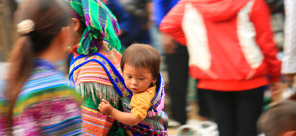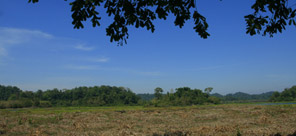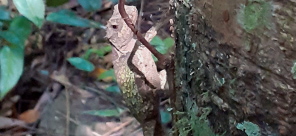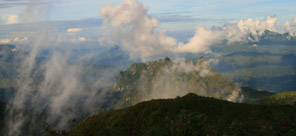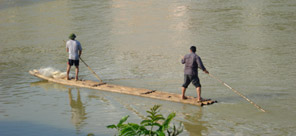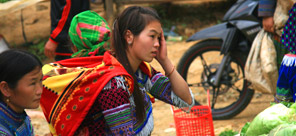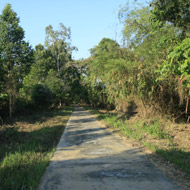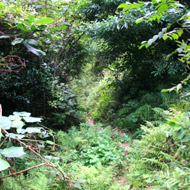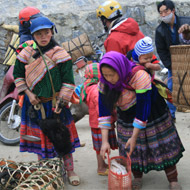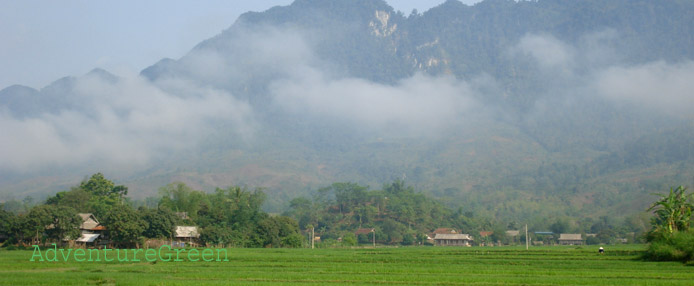Birds of Vietnam, Bird Species in Vietnam
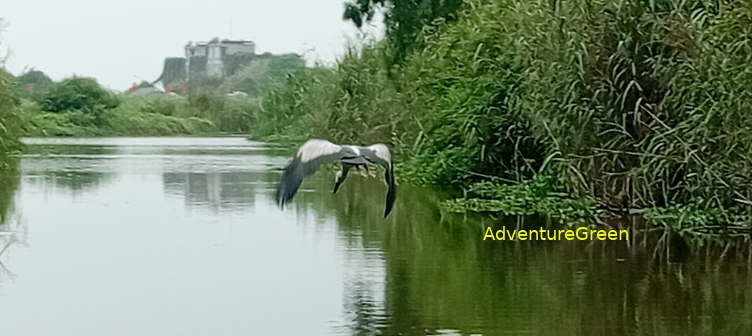
Let's join AdventureGreen on our bird quests to learn about the different birds and bird species in Vietnam. Here you can find out more about the birding spots that these bird species are found.
- Order: Galliformes
- Family: Phasianidae
- Genus: Polyplectron
Grey peacock-pheasant
(Gà tiền xám or Gà tiền mặt vàng, Polyplectron bicalcaratum), also known as Burmese peacock-pheasant
The grey peacock-pheasant (Polyplectron bicalcaratum), also known as Burmese peacock-pheasant, is a large Asian member of the order Galliformes.
The term "Galliformes" is derived from the Latin word gallus, meaning "rooster" or "chicken," combined with forma, meaning "form" or "shape". Therefore, Galliformes literally means "chicken-shaped" or "rooster-like," describing this order of birds that includes domestic fowl and related species like turkeys, quail, and pheasants.
Phasianidae from Phasianus: Latin for "pheasant", derived from the Ancient Greek φἀσιἀνος, phāsiānos, meaning "(bird) of the Phasis", the River Phasis (now the Rioni) in Colchis on the east coast of the Black Sea (now western Georgia).
The name combines the Ancient Greek polus meaning "many" with plēktron meaning "cock's spur".
The specific epithet bicalcaratum combines the Latin bi meaning "two" with calcar, calcaris meaning "spur".
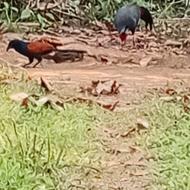
- Order: Galliformes
- Family: Phasianidae
- Genus: Lophura
Siamese fireback
(Gà lôi hông tía, Lophura diardi), also known as Diard's fireback
The Siamese fireback (Lophura diardi), also known as Diard's fireback, is a fairly large pheasant.
- Order: Passeriformes
- Family: Pittidae
- Genus: Hydrornis
Rusty-naped pitta
(Hydrornis oatesi)
Đuôi cụt đầu hung
The rusty-naped pitta (Hydrornis oatesi) is a species of bird in the family Pittidae.
This bird species is native to Indochina and adjacent parts of southern China.
Formerly merged with the genus Pitta, but a 2006 study split the family into three genera.
Latin hydr-, hydro-, from Greek, from hydōr "water" and ornis "bird".
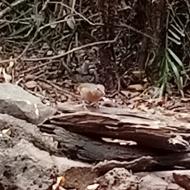
- Order: Passeriformes
- Family: Pittidae
- Genus: Hydrornis
Blue-rumped pitta
(Hydrornis soror)
Đuôi cụt đầu xám
The blue-rumped pitta (Hydrornis soror) is a species of bird in the family Pittidae.
The specific epithet soror is Latin for "sister" (that is "closely related").
- Order: Passeriformes
- Family: Pittidae
- Genus: Hydrornis
Blue Pitta
Hydrornis cyaneus
Đuôi cụt đầu đỏ
Found in the northeastern Indian subcontinent, southern China, and Indochina.
Natural habitat is tropical forest.
Feed by foraging on the ground for insects and other small invertebrates.
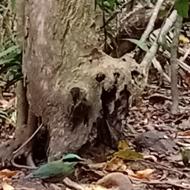
- Order: Passeriformes
- Family: Pittidae
- Genus: Hydrornis
Bar-Bellied Pitta
(Đuôi cụt bụng vằn, Hydrornis elliotii)
A species of bird in the family Pittidae, found in Cambodia, Laos, Thailand, and Vietnam.
Natural habitat is seasonal tropical forest.

- Order: Passeriformes
- Family: Pittidae
- Genus: Hydrornis
Blue-naped pitta (Hydrornis nipalensis)
Đuôi cụt gáy xanh
The blue-naped pitta (Hydrornis nipalensis) is a species of bird in the family Pittidae.
The bird species is found in Bangladesh, Bhutan, China, India, Laos, Myanmar, Nepal, and Vietnam.
Formerly merged with the genus Pitta, but a 2006 study split the family into three genera.
Latin hydr-, hydro-, from Greek, from hydōr "water" and ornis "bird".

- Order: Passeriformes
- Family: Pittidae
- Genus: Hydrornis
Eared pitta (Đuôi cụt nâu, Hydrornis phayrei)
The eared pitta (Hydrornis phayrei) is a species of bird in the pitta family, Pittidae, and is found in Southeast Asia.
Formerly merged with the genus Pitta, but a 2006 study split the family into three genera.
Latin hydr-, hydro-, from Greek, from hydōr "water" and ornis "bird".
- Order: Passeriformes
- Family: Cettiidae
- Genus: Tesia
Grey-bellied Tesia/Warbler (Chích đuôi cụt bụng xám, Tesia cyaniventer)
venter - Borrowing from Latin venter (“the belly; the womb; a swelling”).
New Latin cyani, from cyanus (specific epithet of centaurea cyanus), from Greek kyanos dark blue enamel.
The grey-bellied tesia (Tesia cyaniventer) is a species of warbler in the family Cettiidae.
Natural habitat is undergrowth of subtropical or tropical moist montane forest.
- Order: Passeriformes
- Family: Paridae
- Genus: Parus
(Bạc má lưng xanh, Parus monticolus)
parus or paru menas tit or chickadee.
The green-backed tit (Parus monticolus) is a species of bird in the family Paridae.
There is a species called Langbiang Tit in Da Lat (Vietnam) which may be considered a subspecies of the Green-Backed Tit.
Traits: white-cheeked, black head, black line stretching from lower mandible through throat, breast to belly, yellow sides.
parus or paru menas tit or chickadee.
monticolus: Name derived from Latin for a dweller in the mountains.
- Order: Passeriformes
- Family: Vireonidae
- Genus: Pteruthius
Dalat shrike-babbler
(Pteruthius aeralatus annamensis)
Khướu mỏ quặp Đà Lạt
Da Lat Shrike-Babbler is endemic to southern Vietnam on the Da Lat Plateau, considered a subspecies of the white-browed shrike-babbler.
- Order: Passeriformes
- Family: Vireonidae
- Genus: Pteruthius
Trilling shrike-babbler
(Khướu mỏ quặp cánh vàng, Pteruthius aenobarbus)
The trilling shrike-babbler (Pteruthius aenobarbus) is a species of bird in the family Vireonidae.
Traits:
- white-eyed;
- dry-blood-color on the throat;
- black-white-stripe on the wings;
Vireonidae: Vireo / vireo Latin vireo small green migratory bird.
Pteruthius Greek pteron wing; eruthaino to dye red, to blush.
aenobarbus Latin aenobarbus red-bearded (aeneus of a bronze colour; barba beard).




